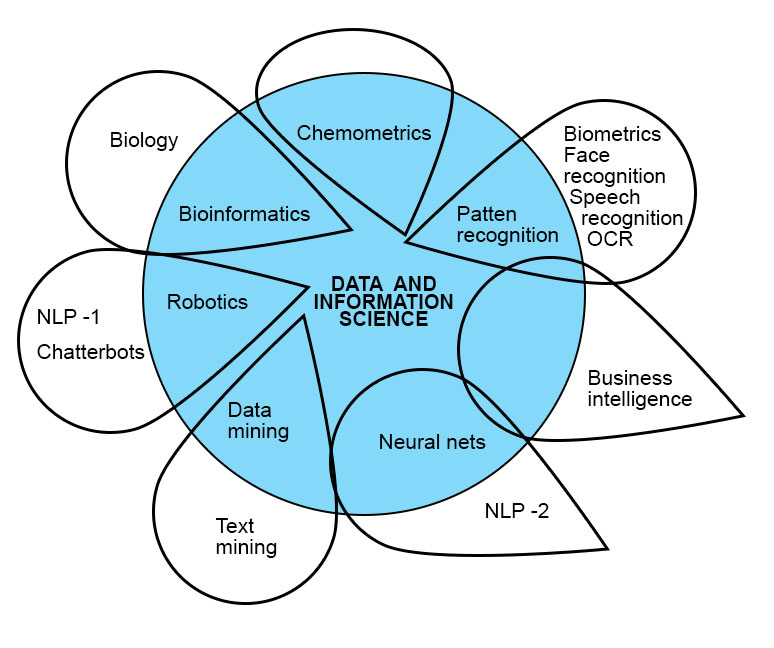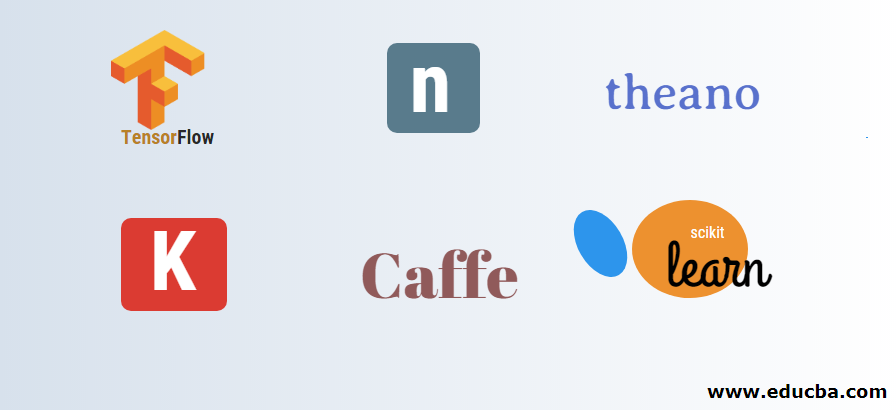
Introduction to Artificial Intelligence Tools
No doubt, Artificial Intelligence Tools, and Machine Learning Tools are the two areas that are aggressively taking up the market in recent times. AI exists since the 1980s, but it is not until very recent years that saw the tremendous growth of AI and its applications. We can say that Artificial Intelligence, like Chat PDF, is the intelligence that is demonstrated by machines and is more likely to try and create a simulation of the human intelligence process.
Areas and Applications of Artificial Intelligence
In the below figure, you will see a major number of areas where AI is being used extensively.
Let us discuss some of them:

1. Machine Learning
In Machine Learning, a goal is defined and the steps to reach the target have to be learned by the machine. Let’s take an example where we have a sample set of pictures of a cat and a lion. The goal of the model is to say a yes whenever a picture of a cat comes on the screen. The machine can learn this by exposing it to a huge number of pictures of cat beforehand so that it can train itself enough to identify the cat as soon as it comes on the screen.
2. Robotics in Artificial Intelligence Tools
This area of machine learning focusses on the building and manufacturing of robots. As we see, today robots exist in any form. The ATM from where we withdraw cash is also one form of a robot and then there are many intelligent working robots. Amazon warehouse is having more than a hundred thousand robots that do the work of shipping inside the warehouse.
3. Natural Language Processing (NLP)
The process of manipulating speech or voices and texts is known as Natural language processing. We can derive many important conclusions from NLP. For e.g. we can automate the task of feedback categorization, if some users are happy or sad with the service, we can implement an NLP to arrive at the conclusion by analyzing their comments through NLP.
4. Vision in Artificial Intelligence Tools
This field gives the machine the ability to see. For example, this ability can be given to a robot or to a car that can use digital signal processing techniques to see through a camera. AI-powered video generation tools like Dreamlux further expand that capability by enabling seamless text-to-video and image-to-video conversion, offering users high-quality, watermark-free video content.
5. Autonomous Driving and Vehicles
This area of Artificial Intelligence focuses on making driving and vehicles autonomous using automotive annotation and other related technologies. For instance, Uber has started making autonomous vehicles without a driver that are operating in very few cities as well.
Top Artificial Intelligence Tools/Frameworks
AI is the talk of the century because each day AI is making the world a better and an easy one. Big names such as Google, Facebook and Amazon are already developing frameworks like all AI tools in one website and contributing them in the form of open-source AI tools. In this section, we are going to see some of the most used frameworks and tools that are used in AI.

1. Caffe in Artificial Intelligence Tools

Caffe was developed by Berkeley Vision and Learning Center and is a deep learning framework that is very popular and widely used among AI engineers and even enterprise users because of its speed. Caffe is capable of processing more than 50 million images all in a single day. The areas where Caffe is extensively utilized are research areas projects, speech, multimedia, and visions.
2. Tensor Flow

Tensor flow is an open-source framework that was developed by Google and is used for numerical computation intelligence. It does the computation by using data flow graphs. If we visit the website, https://www.tensorflow.org/, we can see lots of tutorials and learning that anyone can get and start with using tensor flow.
3. Theano in Artificial Intelligence Tools
Theano is yet again a very popular open-source library that was developed at the University of Montreal, Quebec, Canada by the LISA group. Theano is similar to tensor flow if we leave apart few differences. While Tensor flow is better at GPU support, data visualization options, Theano supports a wider range of operations than Tensor flow does.

4. Keras in Artificial Intelligence Tools
Keras is an open-source neural network library that is programmed in Python language. It has the capability to run on top of other libraries such as Tensor Flow, Theano, etc. It was developed by an engineer at Google, Francois Chollet.
The way Keras work is – it does not handle any low-level computation, instead, it uses other libraries such as Tensor flow and Theano to do it. So Keras handles high-level API and it compiles model with loss and optimizer functions. If we visit the website, https://keras.io/, we can see lots of tutorials and learning that anyone can get and start with using Keras.

5. Scikit-Learn in Artificial Intelligence Tools
Scikit learn is again an open-source machine learning library that is programmed in python. It was developed by David Cournapeau as a part of the Google Summer of Code project in the year 2007. Scikit learn provides a number of supervised and unsupervised machine learning algorithms that can be used inside of your python program.
This library is based on Scientific Python and it must be installed before we can start using the sci-kit-learn library. Some of the features that are provided by sci-kit learn are:
- NumPy: It contains many mathematical functions and can support large and multi-dimensional arrays.
- SciPy: This library contains modules for scientific and technical computing such as the modules for linear algebra, optimization, signal and image processing, integration, etc.
- Matplotlib: It is mostly used as a visualization and plotting library. It can be used to create a wide number of graphical plots for visualizing the machine learning models.
- IPython: It is a console for interactive computing that can be used with multiple programming languages.
- Pandas: This library is used for the purpose of data manipulation and analysis.
6. Pytorch in Artificial Intelligence Tools
PyTorch is a scientific package that is based on Python and it uses the power of GPU (Graphics processing units). It offers an easy-to-use API and it also provides an excellent platform that offers dynamic computational graphs that can be changed during the run time.

Conclusion
As a part of this post, we have learned about AI and its applications. Further, we saw a number of frameworks and tools that are used as a part of modeling any AI application. Please visit the referenced links that are provided in each of the descriptions of the tool and also Google it to know more about it.
Recommended Articles
This has been a guide to Artificial Intelligence Tools. Here we discuss the basic concept, top frameworks, area, and application of Artificial Intelligence Tools. You can also go through our other Suggested Articles to learn more –


